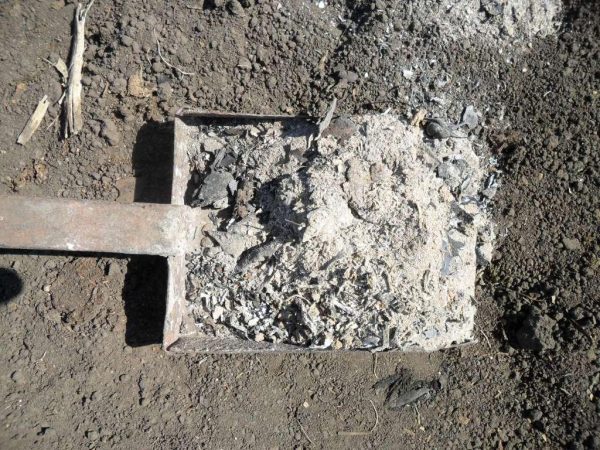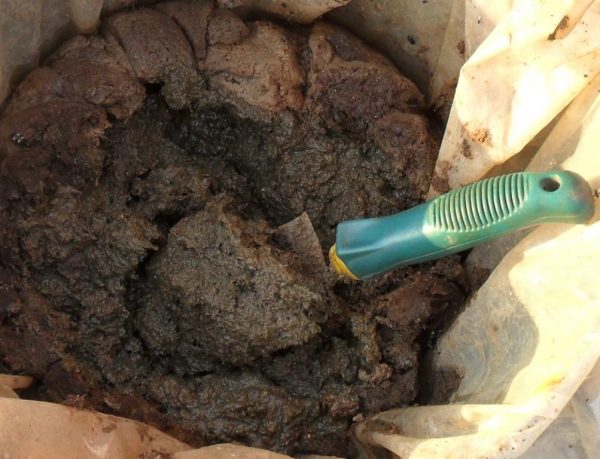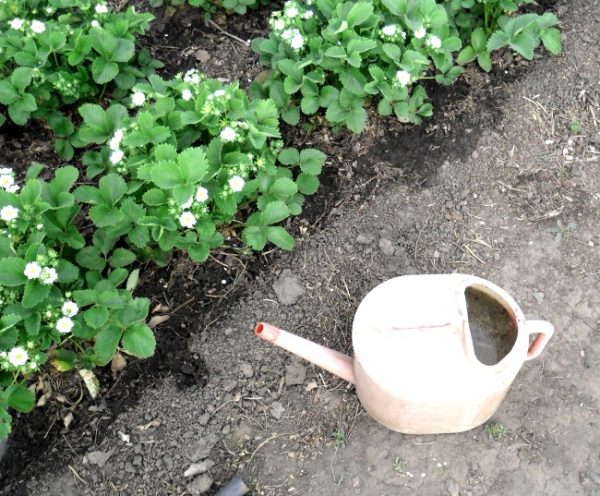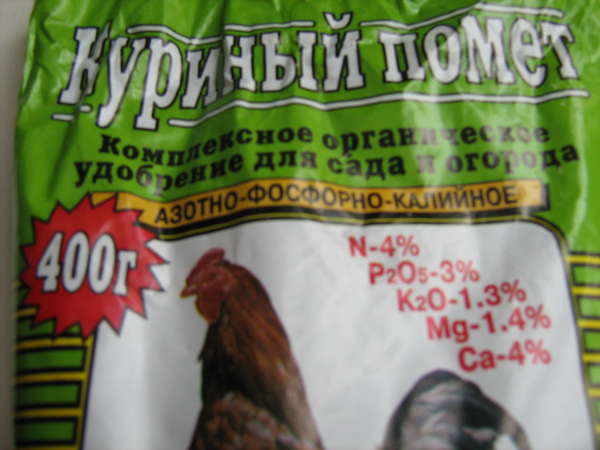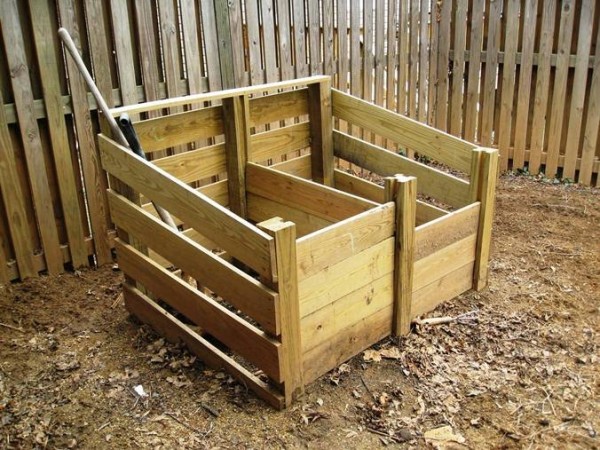How to feed chicken manure: basic recommendations
Content
Cooking liquid top dressing
In addition to the already indicated elements, for which summer residents usually buy mineral fertilizers, chicken manure contains iron, manganese, sulfur, copper, cobalt and zinc. And, nevertheless, it is considered organic, if you feed them correctly, then almost all the plants in the garden, in the garden and the flower garden will receive the necessary nutrition, and as a result, they will delight the owners with abundant flowering and excellent yields, for example, raspberries give berries much larger than without such feeding. But the same substance can cause burns to the leaves and roots of plants if used incorrectly. Top dressing is carried out in spring, autumn, summer, using dry manure, its aqueous solution, fertilizing seedlings and adult plants - such versatility of application is explained by the enormous benefits, even when compared with manure. In order not to cause harm, liquid top dressing is most often used.
The easiest way is to do this: pour 1 part of the droppings with 20 parts of water, leave for several hours, stirring constantly. Then it is advisable to strain this solution and use 0.5 liters for 1 plant. Some gardeners prefer to prepare a concentrated infusion, for this they dilute in a 1: 1 ratio, close the dishes tightly, and leave for 2 - 3 days. This technology allows you to preserve the greatest amount of nutrients in the water. You can store such an infusion all season, if necessary, breed it and use it as a top dressing. 1 liter of such a solution is diluted with 10 liters of water and introduced between the rows of vegetables or flowers.
It is better to use a watering can without a divider, and then pour water on it to wash away any drops that have accidentally fallen from the plants.Another method for preparing the solution is as follows: fresh droppings are placed in a barrel, filling it by 1 third, then topped up with water, stirred well. 1 part of the resulting solution is diluted with 4 parts of water - then it is ready for use. Add approximately 1 bucket per 1 square meter of the garden, but not under the very roots of the plants.
Poultry farms process poultry excrement through fermentation. The droppings are collected in special trays placed under the cages, sawdust and fermentation accelerators are periodically added to it. All this is mixed and folded, when the pile reaches 1.5 m, it is again watered with the fermentation accelerator. After 30 days of keeping outdoors (in summer, and twice as long in winter), this substrate can already be used in the garden or in the garden, it is devoid of weed seeds and helminth eggs. It is used dry or the desired solution is already made from it.
Summer residents can also use this method, since fermentation accelerators are sold in stores. Some people prefer to make an infusion. To do this, the rotted droppings are poured with water, allowed to brew for 2-3 days. The resulting mixture should resemble weakly brewed tea in its color; if necessary, it is diluted to such a state.
Gardeners who are afraid of harming plants with excess acid prefer to soak chicken products. They fill the droppings with water, after a couple of days they drain it, this process is repeated several times. This is believed to remove uric acid and toxins. Perhaps some of the nutrients are removed along with them. Perhaps it is best to fill the droppings with water in a ratio of 1: 3, leave for 3-4 days and add a preparation such as Tamir or Baikal M (only 1 tablespoon for 1 bucket of solution) to speed up processing. The resulting preparation will be freed from seeds and eggs and will be ready for use as fertilizer for flowers, seedlings or adult plants. True, it will still need to be diluted with 4 parts of water.
The result of using liquid top dressing will be visible in 1–2 weeks: the plants will begin to develop much faster, become more powerful and more beautiful, their fruits will become tastier and healthier.
Video "Essential information on feeding with droppings"
Everything you need to know about feeding the soil with chicken droppings.
General principles of fertilization
The easiest way to fertilize your garden is to add dry droppings. This is usually done in autumn or spring before general plowing of the area, and, of course, long before planting seedlings. For 1 sq. m apply up to 0.5 kg of fertilizer. Rain or heavy watering will accelerate decomposition and absorption into the soil. Chicken excrement is never used as a fresh top dressing, fertilizer is prepared from them, because a large amount of uric acid can simply burn the roots of plants.
There is much more nitrogen and phosphorus in chicken manure than in manure, (and than necessary) they evaporate when stored outdoors. And fresh droppings can only be used in the form of a solution. But even cooked and diluted to an acceptable concentration, it is applied between the rows of plants, and not under the roots. It will be correct to make top dressing after rain or watering - in wet soil.
It is very effective to use droppings along with manure for composting. Avian products are placed on plant residues, alternated with sawdust, manure, peat, straw, hay and kept until fully ripe. Dung and manure will create enough heat to quickly heat all components and make humus. If you lay the compost heap in the fall, it will be completely ready in the spring. Such fertilizer without any fear can be applied in the spring for seedlings and all plants in the garden and in the garden.
In the fall, before the general plowing of the site, fresh excrement (like manure) can be scattered over it up to 2 kg per 1 sq. m, then during the winter it will pereret enough and connect with the soil so that in the spring it does not harm the delicate roots of the seedlings. Before planting fruit trees, you can place several kilograms of dry rotted matter or compost in the pit. For growing trees and berry bushes, it is best to apply liquid top dressing in the trunk circle. Raspberry bushes are not enough only for pre-planting feeding, so it is advisable to fertilize raspberries with a solution of chicken manure in spring and summer. Litter, like manure, perfectly fertilizes the soil for several years after application, but raspberries consume a lot of organic matter during the season, therefore, it requires enhanced feeding.
For pumpkins and tomatoes in the spring (or autumn), apply up to 3-4 kg of fertilizer per 1 sq. m beds, after that, during growth, they are watered several times to get only 5-6 liters of solution per 1 sq. m. On the site for white cabbage make 2 kg per 1 sq. m. m, in addition, at least 3 times per season are fed at the rate of 1 liter - per 1 plant. For root crops (except for potatoes) and greens, apply in the fall (or spring) before plowing up to 2.5 kg of fertilizer per 1 sq. m beds. During growth, the greens are not fed, because it can accumulate nitrates, but the root crops are watered several times with a very diluted solution with water.
What plants is combined with
In general, all plants respond well to watering with liquid fertilizer from chicken manure, only it is not applied to seedling holes or under the roots. It will be correct to water the aisles and be very careful not to spray the greens. The use of droppings is especially good for growing grapes, raspberries, tomatoes, cucumbers. Grapes love clay soil and complex fertilizers. Before planting, they bring in enough nutrients to last for several years. But adult plants require regular feeding, so once a season you can add rotted droppings or its solution into the grooves dug between the bushes. Manure can also be used.
Raspberries pick out twice as many nutrients from the ground as gooseberries, so they need to be fed more. This can be done once, as for grapes. You can spread compost or rotted droppings between raspberry bushes, after watering, useful substances will get to the roots. After feeding with chicken droppings, raspberries give a particularly good harvest.
Tomatoes are especially happy with such fertilization, the seedlings immediately respond to it. In the spring, it is good to add dry compost to their area (3-4 kg per 1 sq. M), and then feed them as they grow. But you can overdo it: if, after dressing, the greens become too luxurious (fleshy leaves, thick stems), then the harvest is threatened - the plant is carried away by growth. Then it is better to suspend the application of the droppings, and add ash. Cucumbers are advised to feed before flowering, then there will be fewer barren flowers, and more ovaries.
Is it worth buying a litter
The store sells dry organic fertilizers based on chicken manure, these are Piksa, Roossis. This is a balanced diet without harmful substances; it can be used to water seedlings, soak seeds. Stores offer hot-dried granulated droppings. It's easy to store and use. It can be applied dry, for example, between raspberry or nightshade bushes, and if desired, diluted with water, watering any plants. If there are no chickens at the dacha, then such proposals may well solve the problem of seasonal feeding. They do not contain anything harmful, the range of their application is much wider than that of the fertilizer that we prepare in the country.
Fertilizer Expert Opinion Video
Informative video with an expert opinion on fertilizing soil and plants with bird droppings.


